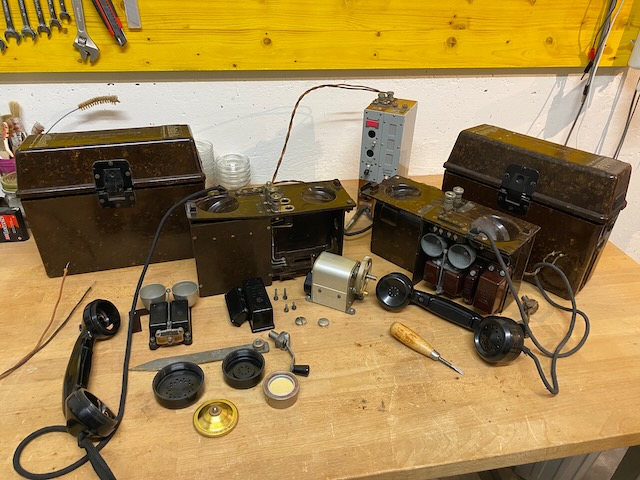
Based on it's designation as "Mod. 42" this Italian field telephone was likely designed in the early 1940s. It was produced by manufacturers FACE (the Italian ITT subsidiary) and AUTELCO (the Italian Automatic Electric subsidiary) [4] and continued to be used by the Italian military post-WWII, even into the NATO era [1].
Externally, it resembles the German FFsp 33, but internally it features a more modern, modular design that allows for quick component replacement, similar to the Spanish C-30101. The circuit i a LB only standard setup with a simple anti-sidetone coil. The handset uses the design of the Automatic Electric "Type 41 Monophone Handset" as eg. used on the Type 40 Monophones (this model was also produced for the Italian market, also by AUTELCO). The units presented here, one by FACE and one in a FACE box but with AUTELCO components, are missing the original batteries, the lightning arresters and additional headset with laryngophone (throat microphone). For a complete version with all accessories, refer to this YT video by @Kaoslaleggenda [3].
Technical description from the "Manuale per l'ufficiale delle trasmissioni" [1] (1956, Manual for the signal officer, translated from italian):
Assignment and use: Various departments. Used on local battery field networks.
Type of operation: Only telephony.
Construction: In a moulded plastic case with a strap containing: the device, the batteries, the push-button microtelephone, a metal rod with a cable clamp for the earth and a cord with two jack plugs to connect another device in branch on the same line.
Transportability: Shoulder strap.
Power supply: 3 VDC with two WB-0/200 or 1.5-T/10 type batteries connected in series.
Range: With D.3 wire: 15-20km. With D.8 or W-110 wire: 20-30km.
Call organs: Magneto-electric generator (115V, 25 Hz at 180-240rpm). Polarised ringer (Resistance 2 x 500Ohm)
Conversation organs: Handset: With handle with push-button switch. Microphone: Capsule with carbon granules and carbon membrane; average current absorbed with 3V power supply: 90 mA. (It is contained in the handset). Receiver: low resistance capsule, 2 x 30Ohm, (It is contained in the handset). Handset cord: made up of four rubber and textile insulated conductors, 0.90m long; wire-end connections). Additional headphones: monaural (resistance 2 x 500Ohm) with bipolar cord insulated in rubber and textile, 0.90m long; bipolar plug connections Induction coil: ratio 1:4.
Protection devices: a) Vacuum arrester: trigger voltage 250V + 20%; insulation resistance 100 MOhm. b) Earth cable clamp, for earthing the arrester.
Accessories: a) Laryngophone: carbon with elastic collar and fastening buckle, connection cord 0.80m long, bipolar and equipped with plug for insertion on the apparatus. Powered at 3V by the apparatus; switch arranged along the cord. b) Earth socket: stick of galvanised iron strip pointed at one end and equipped with a clamp with a non-removable knurled nut, at the other end; total length 0.20m.
NOTE: In order to allow the rapid replacement of the various components, the electrical connections of the same are made by means of the fixing screws to the frame, rather than by soldering. The internal wiring is made with metal elements attached to the frame.
The average capacity data provided are intended for lines in good condition, built with good material and with a minimum number of joints made in a workmanlike manner.
The internal design is modular, allowing for easy maintenance. Components are secured with screws, rather than being soldered like in other devices, enabling quick and simple replacements. Instead of traditional wiring, metal strips are embedded into the Bakelite frame.
The disassembled sets.
On the left the FACE device, on the right the FACE Box with AUTELCO components device, this is probably a later refurbished one, the ground connection and lightning protection are not built in.

The FACE set neatly arranged for assembling.
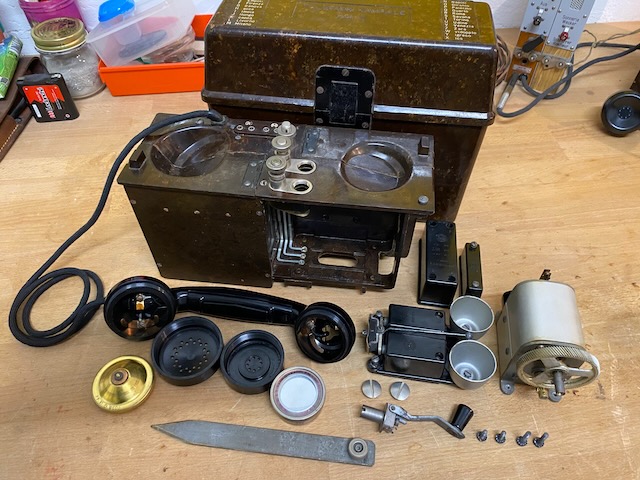
The empty bakelite box.
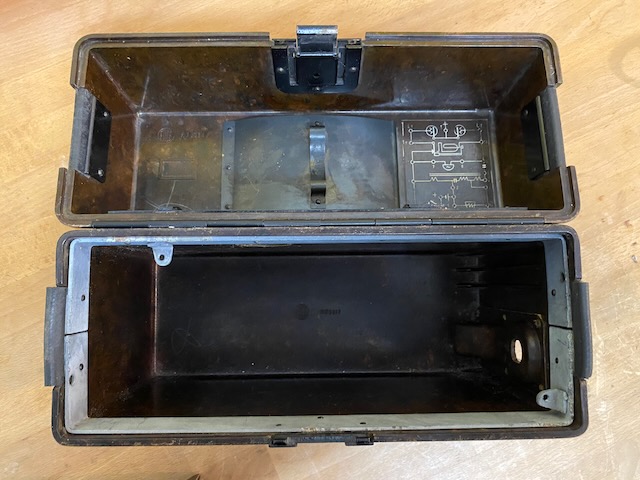
The ground rod is stored inside the top lid.
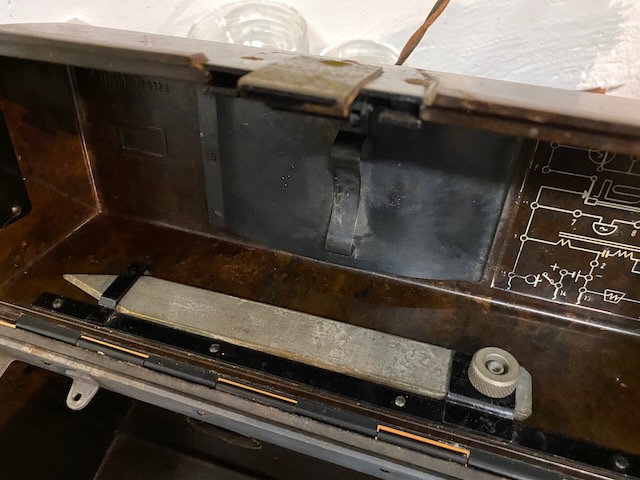
The box lid FACE product number (the box bottom and all components have similar product numbers).

The diagram is embossed into the top lid bakelite.
The elctrcal setup is basic, nothing fancy.
The headset and laryngophone are connected in parallel to the handset RX and TX side.
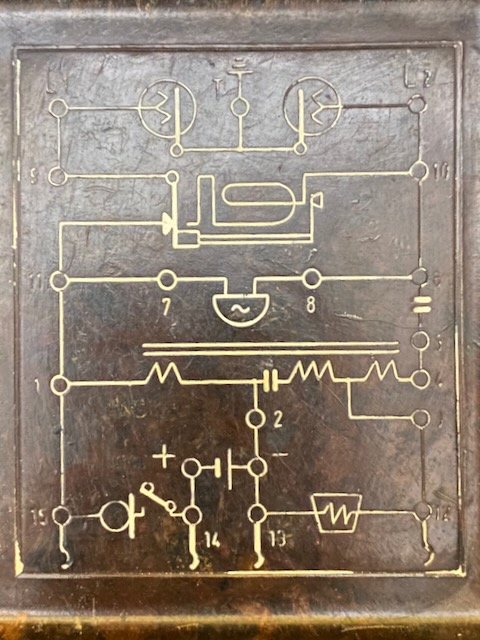
The bakelite handset with PTT lever.
The handset design is similar to the Automatic Electryc handset type 41.
The TX capsule has no make identification but what seems to be a 1944 date stamp.
The RX capsule is made by OLAP (Officine Lombarde Apparecchi di Precisione), then an Italian Siemens subsidiary.
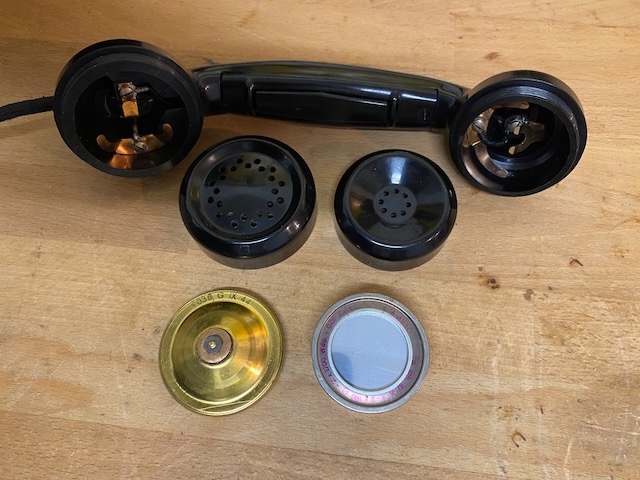
The empty chassis on the magneto side.
At the bottom the three magneto contacts.
At top left the brackets which would hold the surge protection capsules.
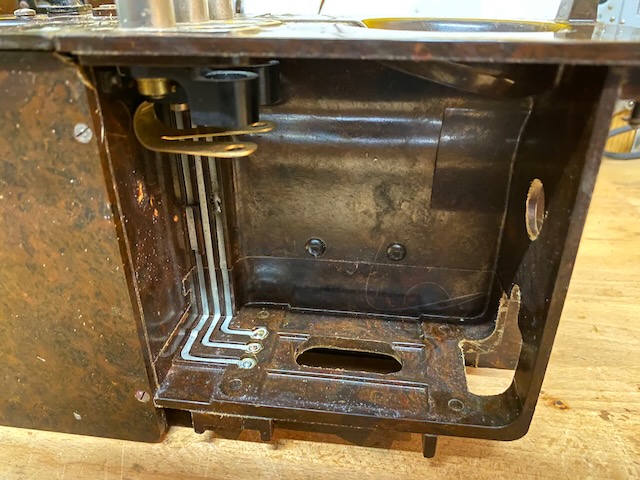
Magneto front.
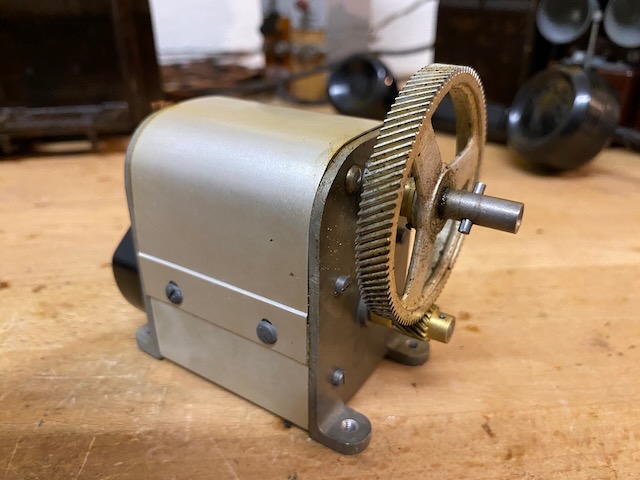
Magneto back.
On the back lid the FACE marking.
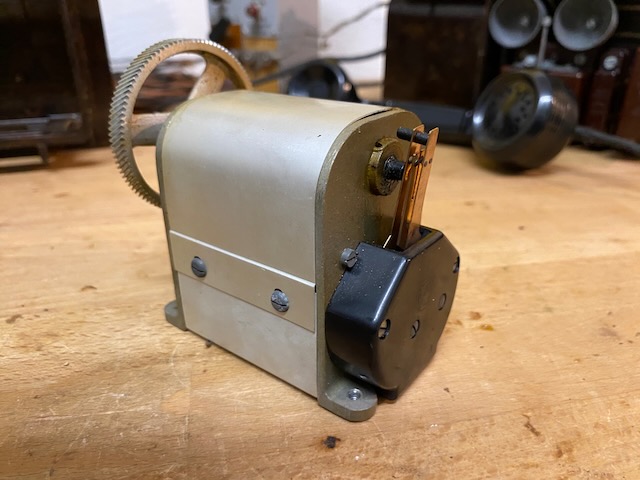
The empty chassis on the components side.
Instead of wiring metallic strips are inlaid into the bakelite chassis.
Each electrical connection is numbered.
This number is reflected on the diagram and the components.
Top left the handset connection.
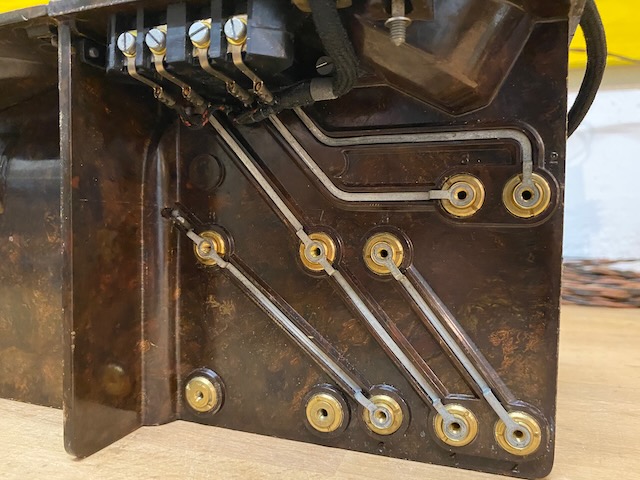
The ringer module front.
(Note connection numbers 7 and 8).

The ringer module back.
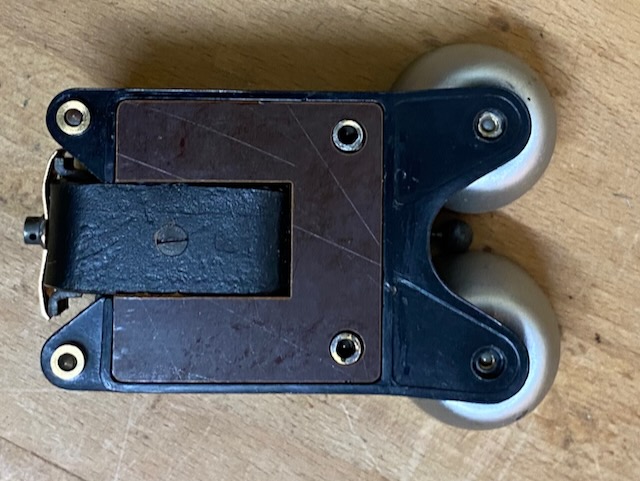
The modules components are sealed into the containers.
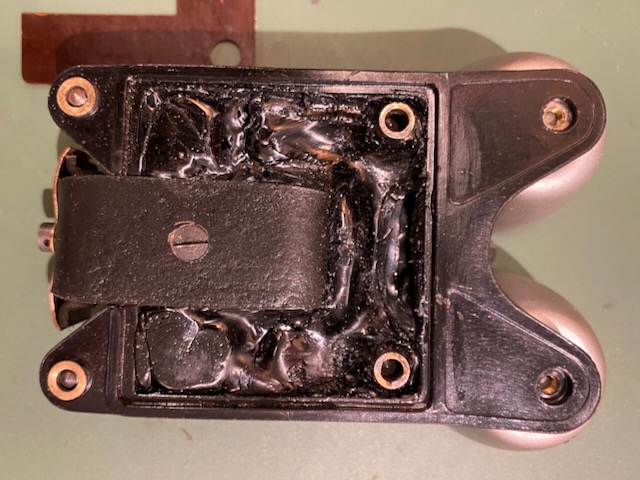
The coil and capacitor modules.
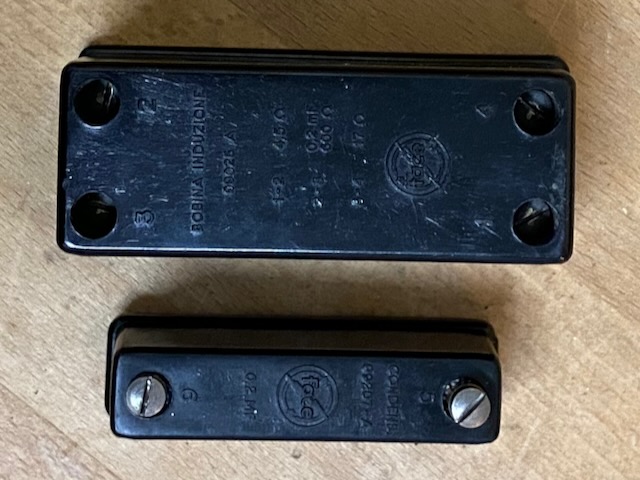
The coil and capacitor modules back.
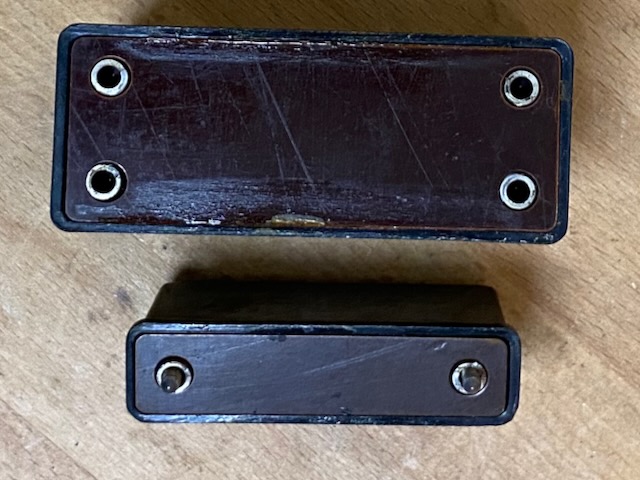
Magneto mounted.
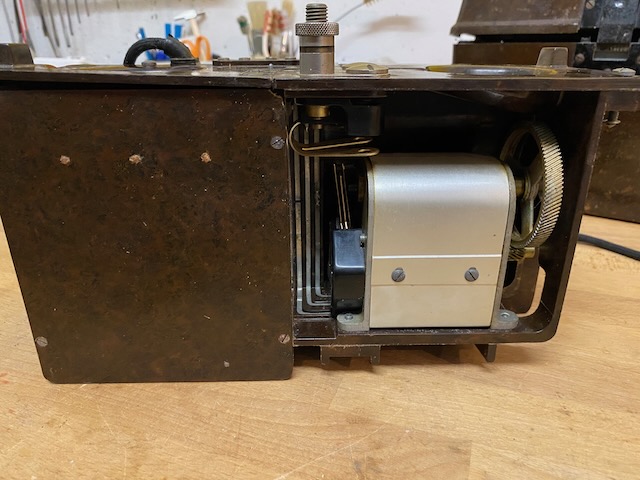
Modules mounted.
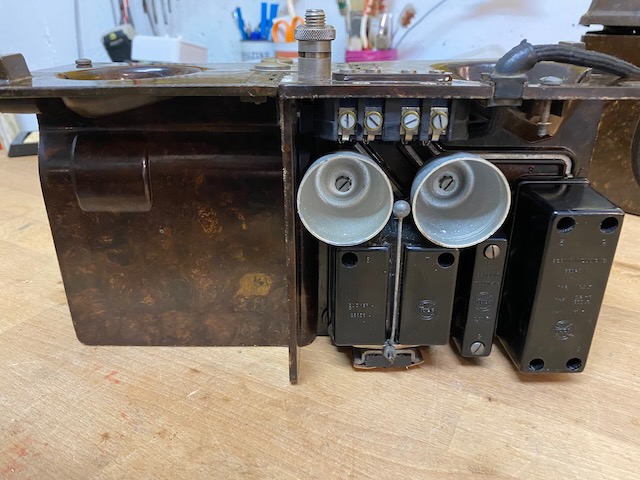
Chassis bottom.
The three smaller screws are the magneto connection screws.
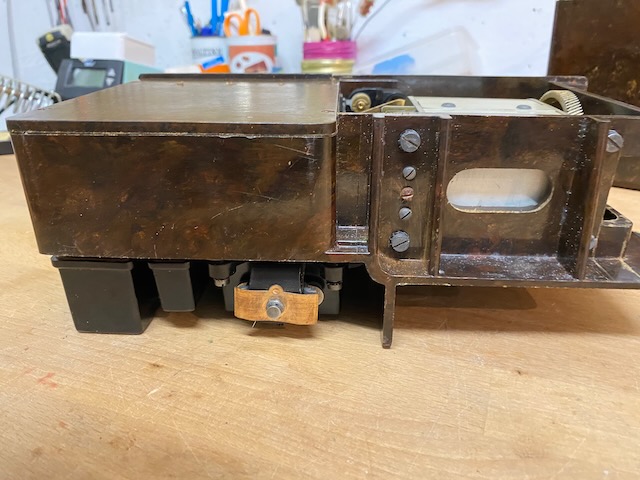
On top of the chassis the line and earth binding posts, the headset and laryngophone plugs and the lids for the battery (bottom left) and accessories (top right) compartments.
The handset cord is fix mounted.
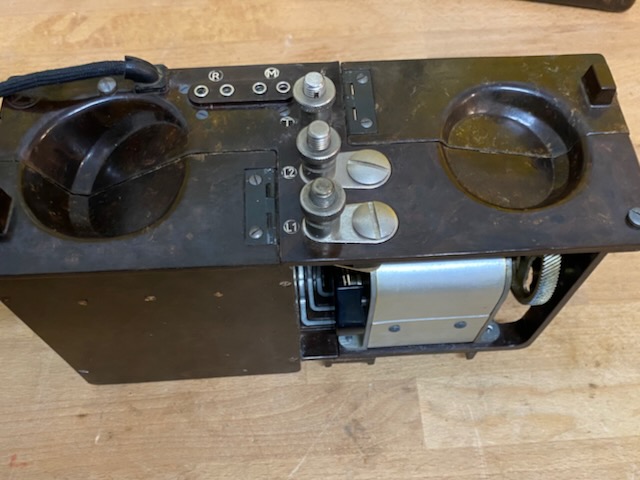
The foldable magneto crank unmounted.
In the bottom of the magneto crank opening there is a metallic clamp which holds the crank when unfolded.
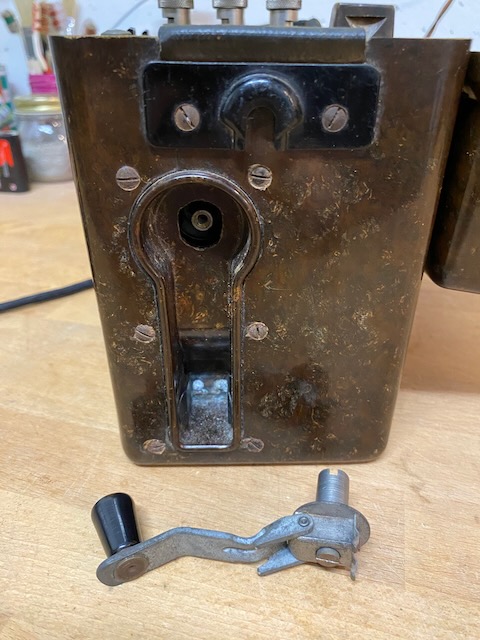
Ready to use.
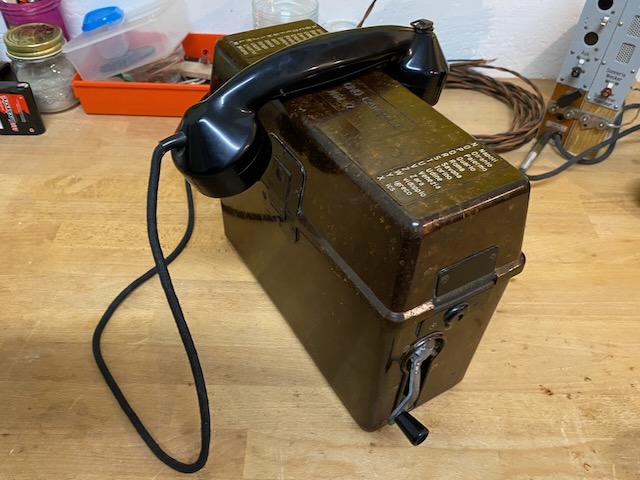
Handset stored.
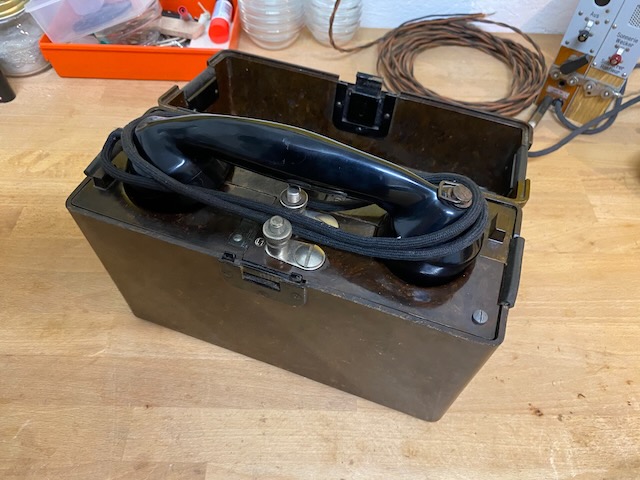
On the lid the spelling table and the model indication.

On the bakelite box back an opening for the ring sound.
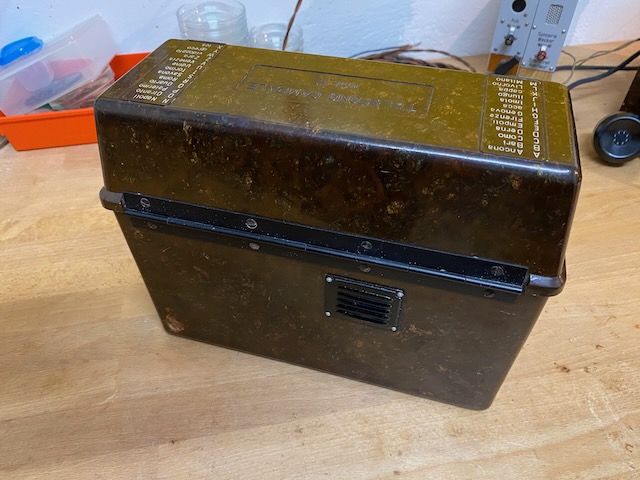
Ready for transport.
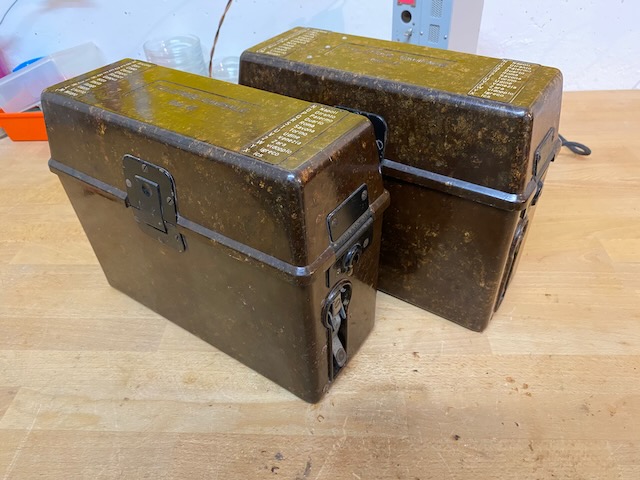
My 2nd Mod. 42 seems to be a refurbished one where AUTELCO components were mounted into a FACE box.
Also the ground connection and surge protection was ommited, aswell as the ground rod holder.
The respective holes are closed with metallic caps.
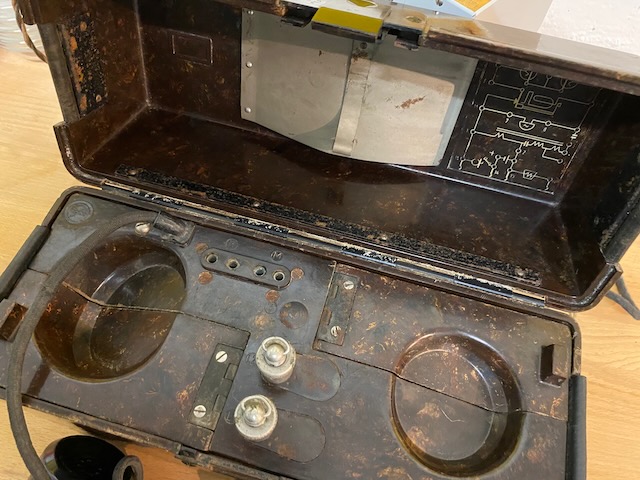
The unused surge protector holes from the inside.
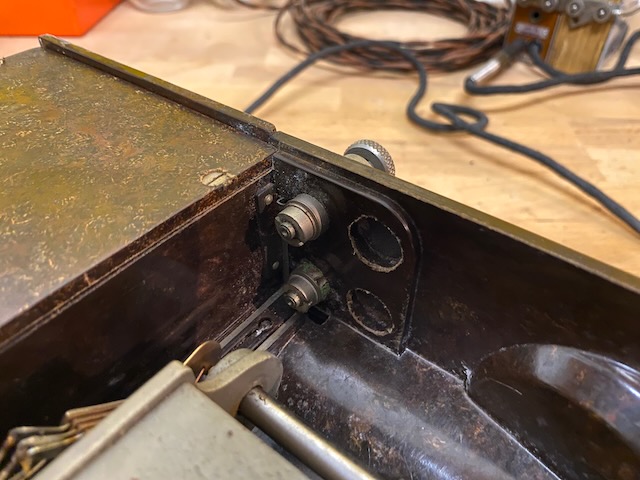
All components are AUTELCO made.
Similar but different from the FACE modules (compare above).

The AUTELCO magneto also is different from the FACE one.
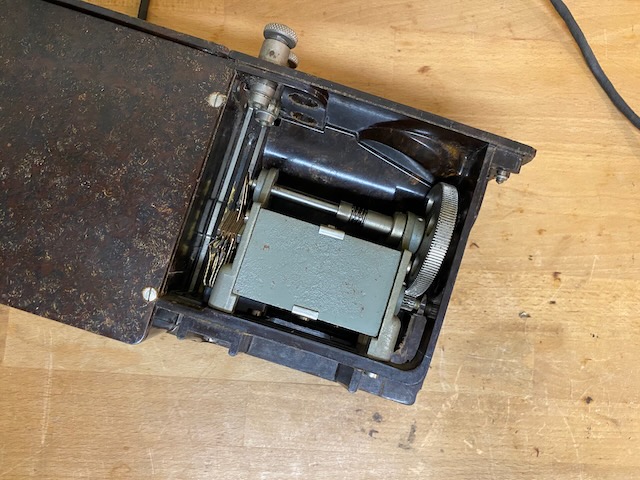
AUTELCO magneto back.
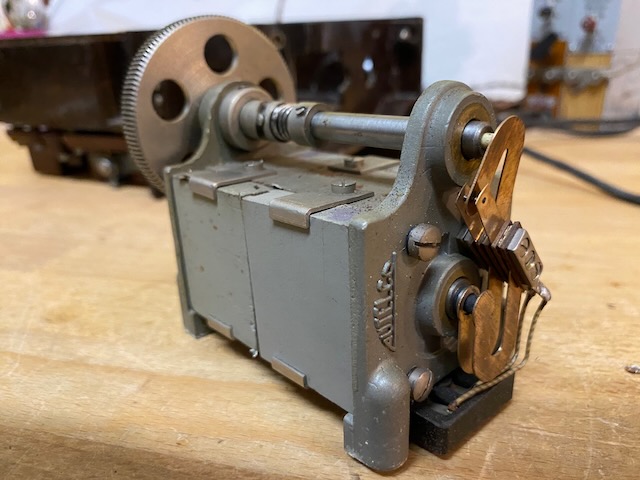
AUTELCO magneto front.
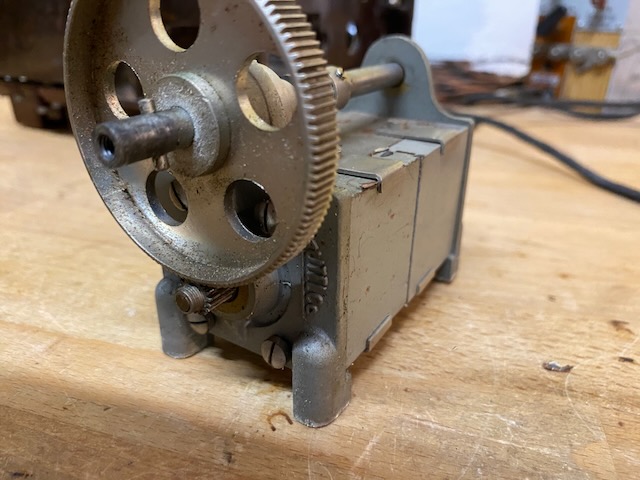
Creative Commons Attribution-ShareAlike 4.0 International License